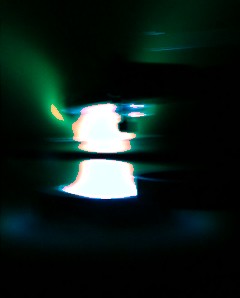PhD opportunities in spintronics and nanomagnetism
Prof. B J Hickey, Dr G Burnell, Dr O Cespedes, Dr C H Marrows and Dr T A Moore
The development of ultrathin film magnetic nanostructures has led to the discovery of remarkable new physical effects such as giant magnetoresistance, current driven magnetic reversal, and artificial antiferromagnets, as well as revolutionising the data storage and memory industries. A new generation of electronic devices are being developed that utilise the spin of the electron as well as its charge to store and process information: all hard disks now use a basic spintronic device discovered only a decade ago, the spin-valve, as their playback head. This industry is now worth billions of dollars globally per year, whilst the paper in Physical Review Letters reporting the discovery of the GMR effect is the sixth most highly cited of all time. New applications in spin logic gates and quantum information systems are envisaged, driven by the progress in the underlying science: new device structures, new materials and the new physical theories needed to describe them. Leeds is one of the leading UK laboratories working in this field, with an outstanding publication record, and co-ordinates UK and European research consortia. The group has recently benefitted from a substantial share of the £9M that the University is investing in Nanotechnology research, and has recently received a £248k grant from the Royal Society to refurbish our laboratories to world-class. We have installed a new bespoke deposition system for tunnel junction and multilayer fabrication and will have a share of the £1M 4-point nanoprober instrument that will soon be installed in the School - this will be only the third instrument of its kind in the world. Current and recent research projects, many involving PhD students, are listed in the groups research portfolio.
 Topics of interest to the group in the coming years include: injection of spin-polarised currents into semiconductors, superconductors, and nanoscale objects such as nanotubes, graphene flakes and quantum dots, multi-terminal spintronic devices, spin transport effects in patterned nanostructures such as domain wall resistance and current induced domain wall motion, development of new high spin-polarisation materials, and investigation of magnetic frustration in large-scale patterned structures using neutron and synchrotron scattering techniques. Students working in this field will learn a wide range of experimental methods, including ultrahigh vacuum and low-temperature physics, nanoscale techniques and the use of central facilities such as neutron and synchrotron sources in the UK, Europe and the USA. Our group benefits from lively team environment, working in a field where basic science interlocks closely with industrial applications. The group has several postdoctoral research fellows working in this area and so provides excellent hands-on training in the laboratory.
Topics of interest to the group in the coming years include: injection of spin-polarised currents into semiconductors, superconductors, and nanoscale objects such as nanotubes, graphene flakes and quantum dots, multi-terminal spintronic devices, spin transport effects in patterned nanostructures such as domain wall resistance and current induced domain wall motion, development of new high spin-polarisation materials, and investigation of magnetic frustration in large-scale patterned structures using neutron and synchrotron scattering techniques. Students working in this field will learn a wide range of experimental methods, including ultrahigh vacuum and low-temperature physics, nanoscale techniques and the use of central facilities such as neutron and synchrotron sources in the UK, Europe and the USA. Our group benefits from lively team environment, working in a field where basic science interlocks closely with industrial applications. The group has several postdoctoral research fellows working in this area and so provides excellent hands-on training in the laboratory.
Different funding streams may be possible for different projects, so the exact number of studentships available for these projects in the coming seesion is still to be decided. In the meantime, Prof. Hickey (room 8:305, b.j.hickey@leeds.ac.uk), Prof Marrows (room 8:306 c.h.marrows@leeds.ac.uk), Dr Burnell (room 8:303,g.burnell@leeds.ac.uk), Dr O Cespedes (room 8.3.2, o.cespedes@leeds.ac.uk) and Dr T A Moore (room 8.301, t.a.moore@leeds.ac.uk) are happy to have informal discussions with anyone interested in research in this area.
